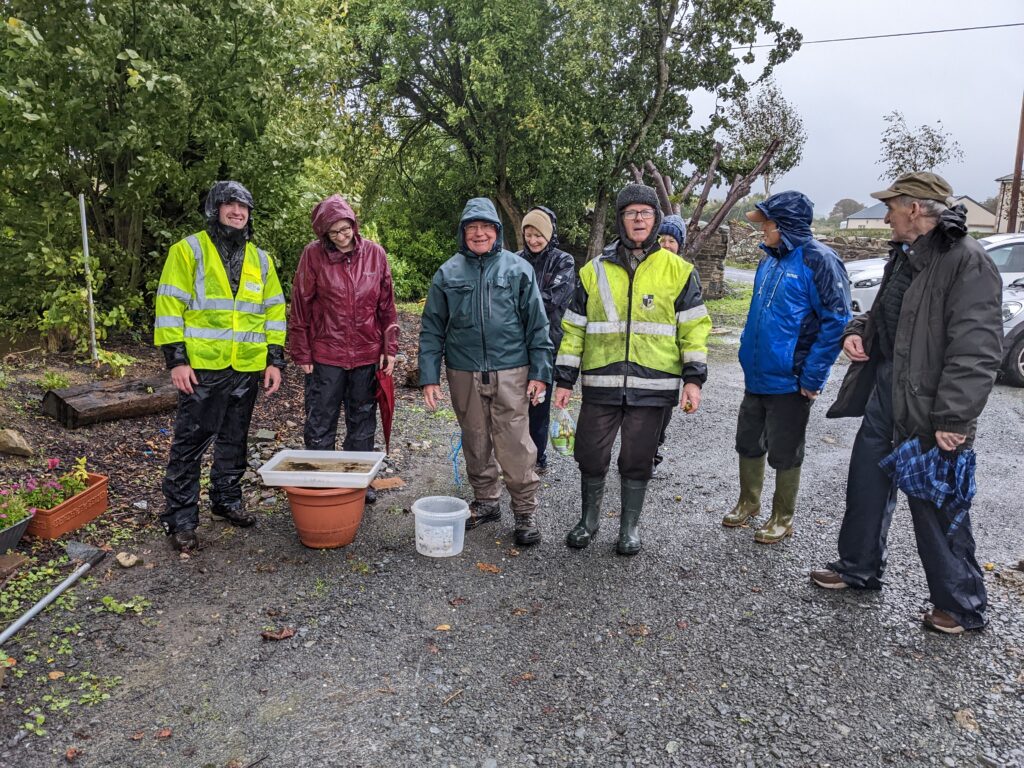On Sunday 9 October 2022 the South Monaghan group visited Lough Muckno at Castleblayney where we sampled for invertebrates, looked at the water plants and discussed ideas for follow-on projects.
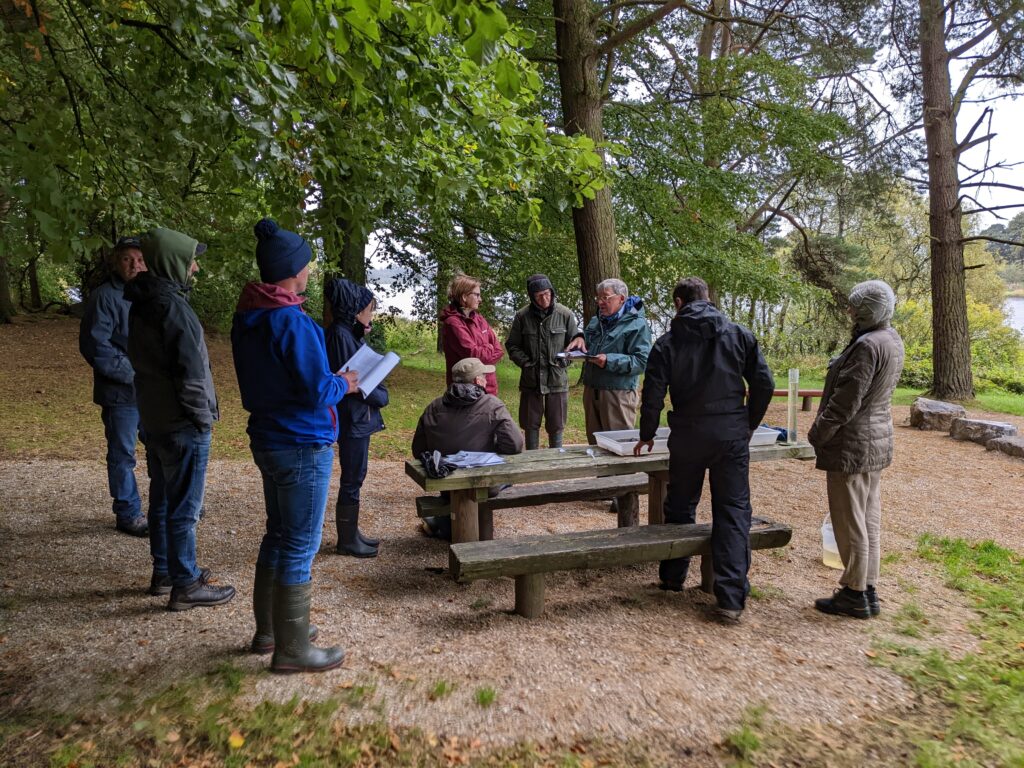
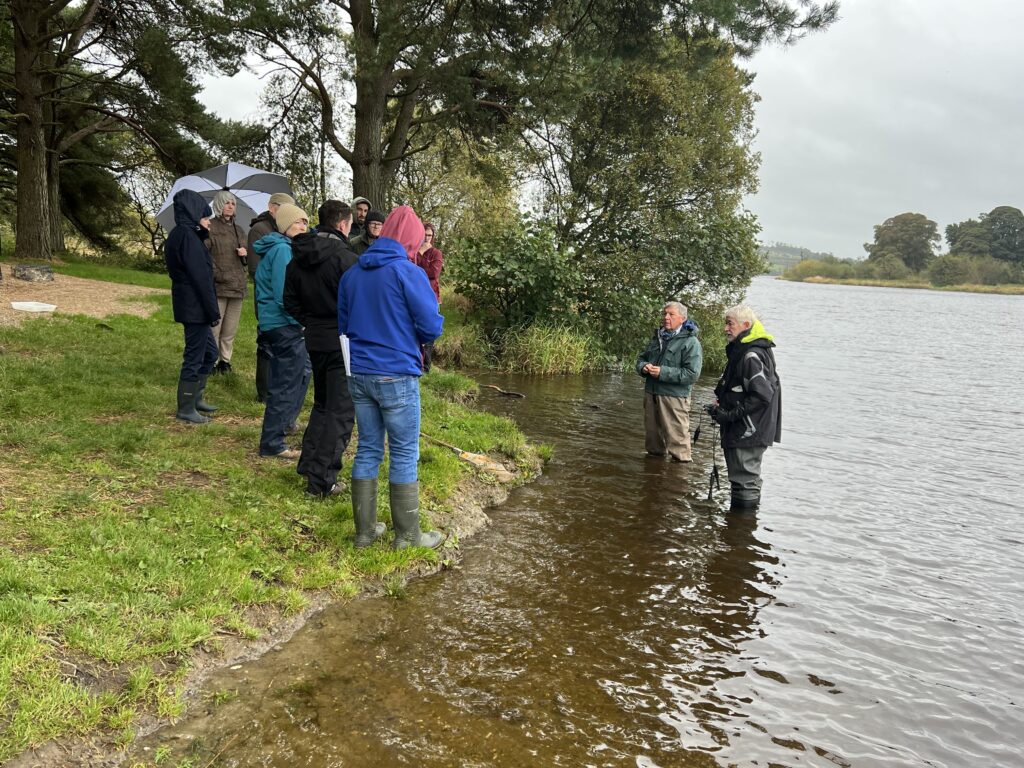
The Macroinvertebrates
We sampled a shallow sandy stretch at Black Island plus some adjacent weedy stretches. As was the case in Emy Lough the previous day, there was quite a contrast between the results from the sandy stretch and the weedy samples with a greater number of species in the weedy sample. This reflects the structure of the habitat – the sandy bottom being relatively uniform, while the weedy stretches have a greater number of ‘niches’ for species.
The sandy sample was dominated by shrimps (Gammarus) while water boatmen (Corixidae) dominated the weedy samples. These samples also had zooplankton – Daphnia was notable. We found large numbers of the small mayfly Caenis also known as “the anglers curse” and Ken explained that this name is due to their mass emergence habit that makes the anglers’ flies redundant as the fish gorge on these emerging mayflies.
We failed to find the large mayfly, Ephemera danica despite some intensive searching.

The Ecological Status of Lough Muckno
This may not be that surprising as the EPA classify the lake as being at Bad ecological status. This rating is primarily due to the condition of the macrophytes or aquatic plants in the lake. Nutrient levels are very high particularly for phosphorus which is usually the ‘limiting nutrient’ in freshwater. The phosphorus concentrations are particularly high in Lough Muckno, and this drives a dense phytoplankton population which in turn clouds the water such that bottom-living plants cannot survive as light levels are too low at depth. We demonstrated Secchi depth – this method measures light penetration in the lake water. The average transparency or Secchi depth is only 1.3 m with a maximum of 3.2 m – these are very low values and easily account for the lack of aquatic plants in the deeper areas of Lough Muckno.
Lough Muckno is also on the so-called “Surveillance Monitoring Network for the Water Framework Directive (WFD). This means that in addition to the usual chemistry parameters measured by the “Operational Monitoring Network”, a large number of dangerous substances are screened for including herbicides such as glyphosate and MCPA but also PAHs or polycylic aromatic hydrocarbons that result from burning coal, oil, gas, wood, garbage, and tobacco but end up in water.
Measuring Dissolved Oxygen

We measured the levels of oxygen dissolved in the lake water and explained the concept of percentage saturation. Water holds more oxygen when it is cold and less is dissolved in water at higher temperatures. For any given temperature there is an ideal 100% saturation point – see the graph above.
Oxygen is critical for both fish and invertebrates – their gills extract oxygen from the water.
We explained that our national standards form dissolved oxygen have two thresholds – 80% and 120%. If saturation falls below 80% or goes above 120% a water body will fail on its oxygenation condition.
The reason for the 120% threshold is that values above 100% indicate that plants are photosynthesising and pumping out oxygen that dissolves in the water – but only during daylight hours. At night plants continue to respire and use oxygen. If there is sufficient plant biomass to push daytime concentrations above 120% it is likely that night-time concentrations will fall below 80% and cause distress to fish and macroinvertebrates.
On the day we measured 8.75 mg/l dissolved oxygen at 12.8 °C giving 83.9% saturation. The day was cloudy, and the sediments appear to be using more oxygen than the phytoplankton and local rooted plants could produce on a cloudy day in October.
Fish
Ken discussed the main fish species in Ireland – salmon, trout, pike, rudd, roach and eels. He gave a detailed account of fish life cycles outlining different strategies – those that spawn in freshwater with young fish then going to sea to feed such as salmon and sea trout. Eels have an opposite strategy i.e. spawning at sea. Many species of course spend their full life cycle in freshwater.
Ken had just come back from Greenland where he was part of a team tagging salmon in order to track their movements on the way back to European rivers and lakes. Pop-off satellite tags allow an individual salmon’s location to be determined within a range of approximately 30 km together with a range of data such as depth and salinity.

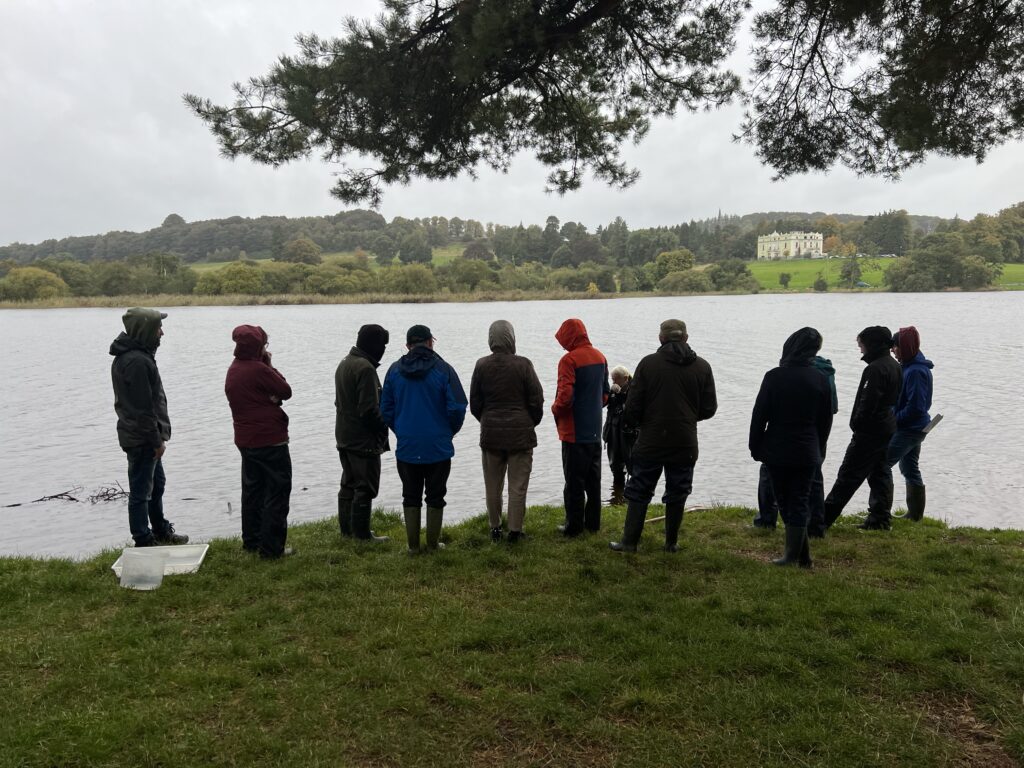
Before lunch we took part in the WaterBlitz 2022 campaign, measuring nitrate and phosphate at the inflow to Lough Muckno. See the separate account of this WaterBlitz sampling.
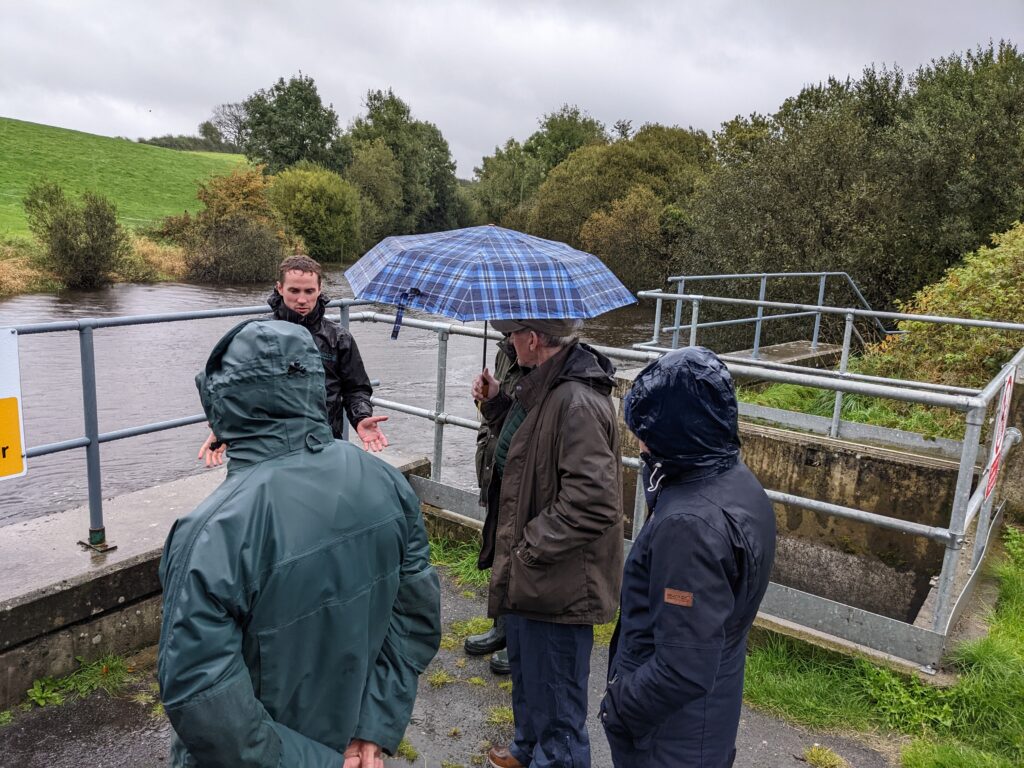
In the afternoon we visited the controlled outflow point from Lough Muckno running into the River Fane. We explained how hydrometric gauges work.
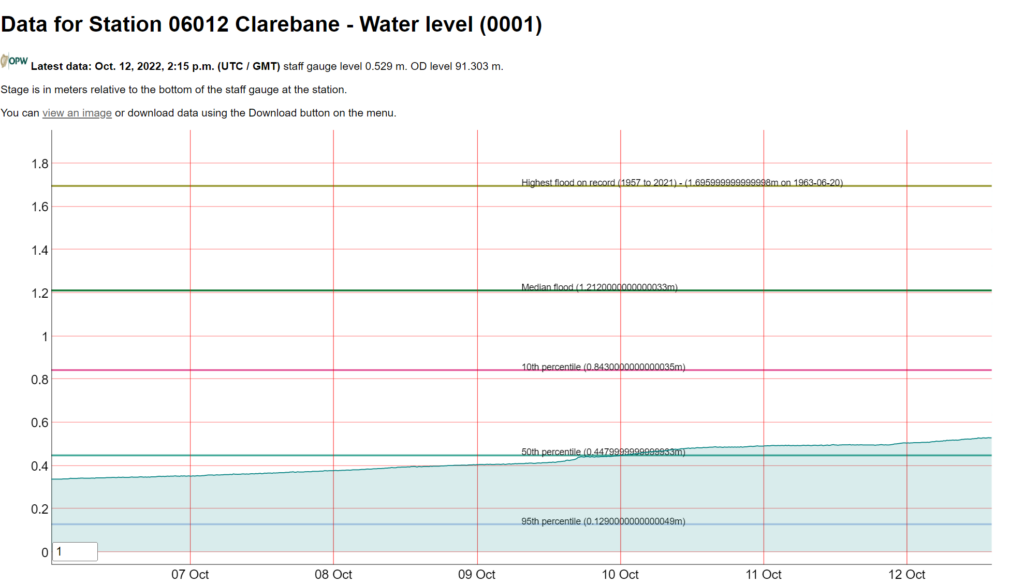
Finally we took a quick sample from the Fane at Clarebane and noted that it was strongly affected by the outflow from the lake as it was dominated by filter feeders such as the bivalve Sphaerium the net-spinning caddis larvae of Hydropsyche plus blackfly larvae. These invertebrates feed on the phytoplankton being washed out of the lake.
